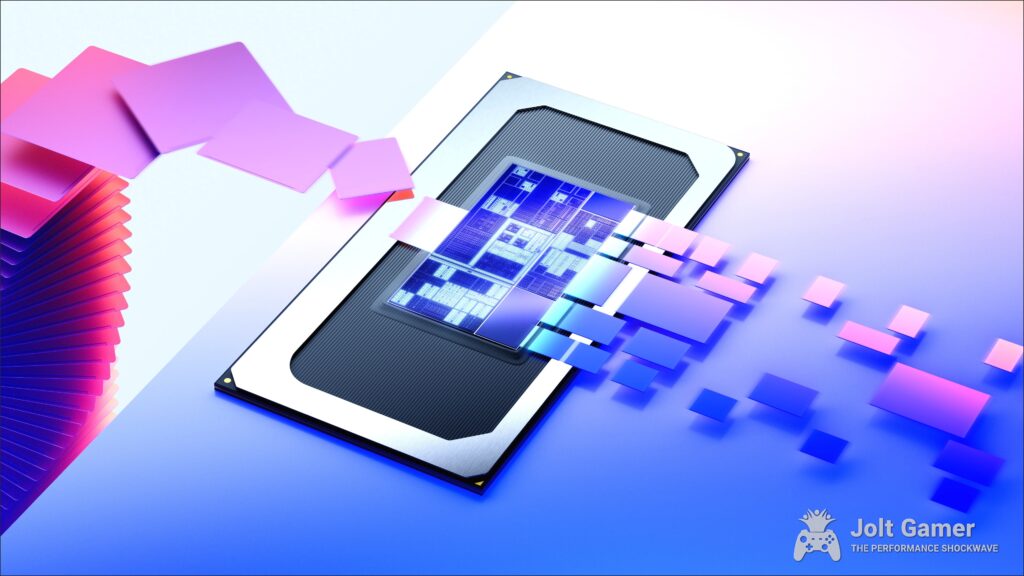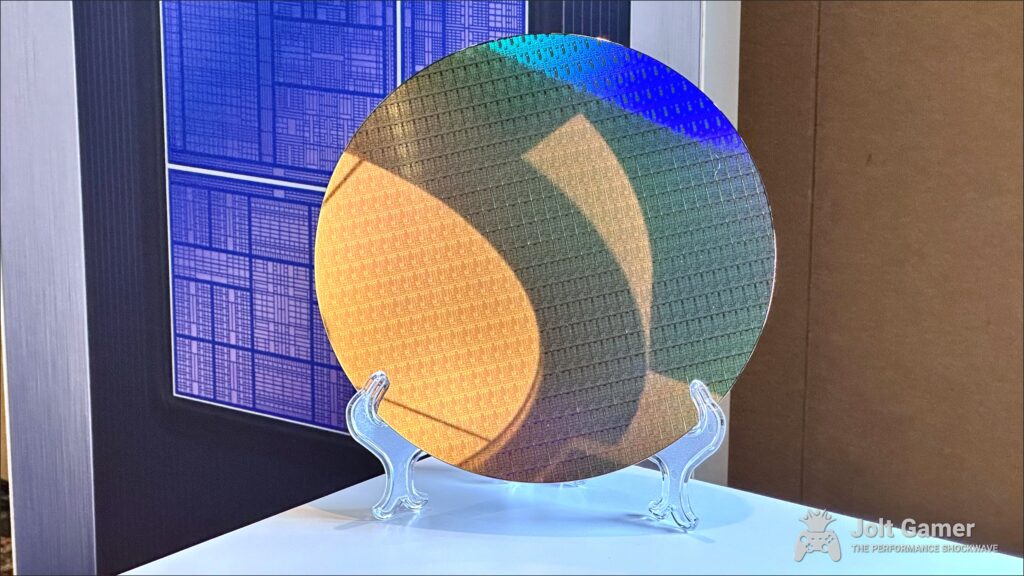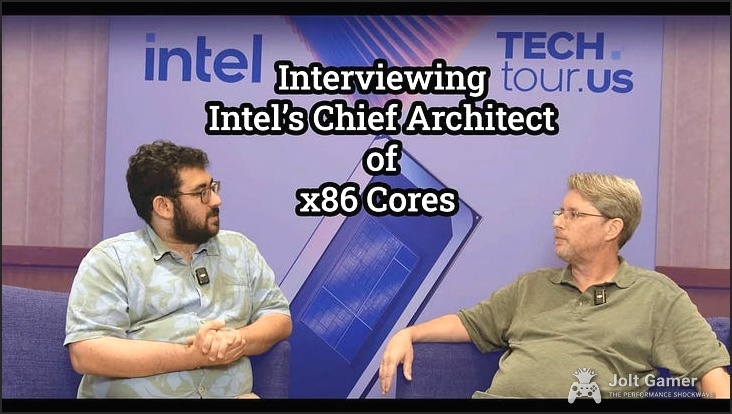Intel Panther Lake: A Definitive Analysis of Xe3 Graphics, AI Performance, and Its Laptop Gaming Future
Key Takeaways
- Panther Lake is Intel’s bold foray into the future, integrating the new 18A process, a flexible chiplet architecture, and a significant strategic shift with the removal of SMT in client CPUs to boost efficiency and performance.
- The integrated Xe3 graphics, branded as Arc B-series, promises a substantial 50% performance uplift over Lunar Lake, further bolstered by advanced XeSS 3 multi-frame generation, positioning it as a compelling choice for next-gen laptop gaming.
- A powerful NPU 5, working in concert with the CPU and GPU, delivers an impressive 180 AI TOPS, aggressively targeting the burgeoning AI PC market and establishing a strong competitive stance against Arm-based processors.
- Initial benchmarks reveal impressive gains, with Panther Lake surpassing the RTX 3050 in 3DMark TimeSpy, yet its full competitive standing against higher-wattage rivals will require comprehensive real-world testing.
- The gaming community eagerly anticipates potential discrete Xe3 GPUs and next-gen handheld integrations, but remains pragmatic about pricing, availability, and the real-world quality of frame generation technologies.
Introduction: The Dawn of Panther Lake
Intel’s next-generation computing platform, Panther Lake, is poised to reshape the landscape of laptop gaming and AI. Slated for a 2026 release, this architecture represents a significant leap forward, built on the cutting-edge 18A process node and featuring the all-new Xe3 graphics. We’ve gathered extensive intelligence, including insights from Intel’s lead x86 CPU architect Stephen Robinson, early benchmarks, and community sentiment, to bring you the definitive analysis of what Panther Lake means for gamers and tech enthusiasts. From its innovative core designs and the strategic decision to abandon Simultaneous Multithreading (SMT) to its formidable AI capabilities and integrated graphics performance, join us as we dissect every facet of Intel’s ambitious new platform.

Architectural Revolution: Under the Hood of Panther Lake
Panther Lake marks a pivotal moment for Intel, leveraging the advanced 18A process node with RibbonFET and PowerVIA backside power delivery. This isn’t just a process shrink; it’s a foundational shift. This chiplet design, combined with Foveros 2.5D/3D packaging technologies, offers unprecedented flexibility for OEMs, allowing choices between LPDDR5x or DDR5 memory, LPCAMM modules, and diverse PMIC selections. Such modularity is crucial for effectively targeting the diverse AI PC market, offering three distinct CPU and GPU combinations and extensive PCIe Gen 4/5 lanes for discrete graphics. This approach allows Intel to tailor solutions precisely to market demands, a bold gamble that could pay dividends in versatility.

The Core Philosophy: P-Cores, E-Cores, and the End of SMT
At its heart, Panther Lake features Cougar Cove P Cores and Darkmount E Cores, alongside dedicated LP-E Cores. Core configurations will support up to 4 P Cores, 8 E Cores, and 4 LP-E Cores, with the LP-E configuration specifically optimized for daily, low-power workloads. Intel has significantly enhanced both Cougar Cove and Darkmount, particularly with improvements in memory disambiguation, branch prediction, and TLB. These aren’t minor tweaks; they’re fundamental optimizations, leveraging AI for energy management to achieve superior energy efficiency over Lunar Lake and multi-core performance surpassing Arrow Lake-H at the same core count. This refined core design aims to maximize instruction throughput and minimize latency, directly translating to snappier application performance and extended battery life for users.
Perhaps the most striking architectural decision, and certainly a bold one, is the strategic abandonment of Simultaneous Multi-Threading (SMT), also known as Hyper-Threading, in client CPUs like Panther Lake. This move, as explained by Intel’s lead x86 CPU architect Stephen Robinson, stems from the drastically reduced value of SMT in modern hybrid compute environments. With sophisticated task scheduling prioritizing P-cores, then E-cores, before assigning to threads, the traditional benefits of SMT became redundant. Removing SMT has yielded substantial gains in design execution, lower power consumption due to fewer transistors, a smaller die area, and easier achievement of frequency targets. Crucially, this was accomplished without significant client performance loss, allowing Intel to optimize for real-world scenarios where core-type-based scheduling provides a more efficient path to performance.
‘We didn’t lose a lot in client because of hybrid and the core count, but we gained a bit in our design and execution,’ stated Stephen Robinson, highlighting the efficiency benefits of the SMT removal.
Intel Panther Lake CPU Architecture Highlights
- Process Node
- Intel 18A (RibbonFET, PowerVIA)
- Packaging Technology
- Foveros 2.5D/3D
- P-Cores
- Cougar Cove (up to 4)
- E-Cores
- Darkmount (up to 8)
- LP-E Cores
- 4 (optimized for daily workloads)
- Multithreading
- No SMT (Hyper-Threading) in client CPUs
- Memory Subsystem
- Flexible (LPDDR5x, DDR5, LPCAMM support)
- L3 Cache
- 18MB shared (Cougar Cove)
- L2 Cache
- Independent (Cougar Cove), Shared (Darkmount)
- LP-E Memory Side-Cache
- 8MB
Xe3 Graphics: Intel’s Integrated Gaming Ambition
The integrated GPU in Panther Lake is where many gamers’ eyes will turn, and for good reason. Introducing the Xe3 graphics architecture, branded as Arc B-series, it represents a continuous architectural refinement within the Battlemage family. Available in 12-core and 4-core Xe Core versions, Xe3 is designed to deliver a strong gaming experience and excellent heterogeneous acceleration, aiming for significant performance gains over its predecessors. This is Intel’s clear statement of intent to become a serious contender in integrated gaming performance, a critical factor for the thin-and-light laptop market.

Microarchitectural Leaps: What Makes Xe3 Tick
Xe3 introduces core enhancements focused on improving resource utilization and scalability. While maintaining the basic Xe2 Xe Core layout — eight Xe Vector Engines, eight XMX engines, and one ray-tracing unit — it significantly boosts thread-in-flight capacity by 25%, from eight to ten threads per core. This is achieved through a new variable allocation strategy for register file partitions, a change that dramatically impacts performance in register-heavy shaders. Furthermore, the Xe3 render slice now begins with six Xe Cores, up from Xe2’s maximum of four, offering Intel greater control over GPU sizing. Memory and cache hierarchy have also seen crucial improvements, with shared local memory per Xe core increased to 256KB (from 192KB in Xe2) and the largest 12-Xe-Core Panther Lake Arc GPU now featuring 16MB of shared L2 cache, doubling Lunar Lake’s 8-Xe-Core engine. These memory enhancements are vital for reducing traffic on the on-package fabric and mitigating performance bottlenecks, ensuring the GPU can access data quickly and efficiently.
Xe3 vs. Xe2 (Lunar Lake) iGPU: Key Architectural Improvements
| Feature | Xe2 (Lunar Lake) | Xe3 (Panther Lake) |
|---|---|---|
| Thread-in-Flight Capacity per Core | 8 | 10 (+25%) |
| Shared Local Memory per Xe Core | 192KB | 256KB |
| Max Shared L2 Cache (12 Xe Cores) | 8MB (8 Xe Cores) | 16MB |
| Ray Tracing Engine | Thread sorting bottlenecks | Dynamic ray dispatch, improved sorting |
| Unified Return Buffer (URB) | Full flushes on context switch | New management agent, partial updates |
| Anisotropic Filtering / Stencil Test Rates | Standard | Up to 2x increase |
XeSS 3 and Multi Frame Generation: Boosting FPS
Intel is heavily investing in its XeSS suite, with XeSS 2 already providing excellent upscaling and 2x frame generation. Panther Lake will introduce an AI-accelerated Multi Frame Generation (MFG) feature, expanding capabilities with 2x, 3x, and 4x modes. Crucially, XeSS MFG will not require game developers to update existing XeSS 2 titles; functionality will be enabled through an override in the Intel Graphics Software control panel for games already supporting Xe Frame Generation. This is a massive win for user accessibility. While early demos showcased impressive image quality, concerns about potential input lag in fast-paced games persist within the community, mirroring broader skepticism about generated frames. Gamers demand not just more frames, but quality frames that don’t compromise responsiveness.
XeSS 3: Instant Frame Generation (No Game Updates Needed!)
One of the most exciting aspects of XeSS 3’s Multi Frame Generation is that it won’t require game developers to implement new code. Users can enable 2x, 3x, or 4x frame generation directly through the Intel Graphics Software control panel in games already supporting Xe Frame Generation. This offers a significant boost to frame rates for a wide range of titles, though competitive gamers should monitor potential input lag.
The AI PC Era: Panther Lake’s Neural Engine
Beyond raw CPU and GPU power, Panther Lake is engineered as a true AI PC platform. It integrates the NPU 5, a significant upgrade from Lunar Lake’s NPU 4, achieving 50 AI TOPS (Tera Operations Per Second) on its own. When combined with the CPU and GPU, Panther Lake boasts a maximum of 180 TOPS, a figure that significantly exceeds competitors like the Snapdragon X Elite (75 TOPS total, 45 TOPS NPU) and Apple M4 (38 TOPS NPU). This robust local AI capability is crucial for enhancing office worker productivity through automated tasks, enabling real-time analysis for critical applications, and minimizing reliance on cloud processing for improved privacy and security. Intel is not just dipping its toes into AI; it’s diving headfirst, aiming to define the next generation of personal computing.
AI Performance: Combined TOPS (CPU+GPU+NPU)
Real-World Performance: Early Benchmarks & Competition
Early benchmarks for Intel’s flagship Panther Lake Core Ultra X9 388H processor, featuring a 12 Xe3 core graphics block, indicate a significant performance uplift. In 3DMark TimeSpy tests, the Core Ultra X9 388H achieved scores around 6,300, a substantial 50% increase over Lunar Lake’s 4,000 score. This performance, achieved at a modest 45 watts, notably surpasses an RTX 3050 GPU (which scored 4,637 for the Ti version in lab tests), a remarkable feat for integrated graphics. Intel also claims about 40% better performance per watt compared to Arrow Lake-H and 50% better performance per watt relative to Lunar Lake, underscoring their focus on efficiency.
3DMark TimeSpy Scores: Panther Lake vs. Competition (iGPU/Low-Power dGPU)
While Panther Lake shows impressive gains, it faces fierce competition. The AMD Ryzen AI Max+ 395 processor, for instance, achieved a much higher 11,530 in 3DMark TimeSpy. However, it’s crucial for enthusiasts to note the significant power disparity: Panther Lake was tested at 45 watts, while AMD’s chips can operate up to 120 watts, allowing for higher sustained performance. Against the RTX 4050 laptop GPU, Panther Lake still trails (7,415 score), indicating it’s not designed to compete with higher-end discrete solutions. Intel is strategically positioning Panther Lake to aggressively compete with Arm architecture processors in the thin and light notebook market, emphasizing x86’s sustained advantage in energy efficiency and performance. This is a calculated move to capture a growing segment of the market.
Panther Lake vs. Snapdragon X Elite: AI PC Platform Comparison
| Feature | Intel Panther Lake | Snapdragon X Elite |
|---|---|---|
| Process Node | Intel 18A | 4nm |
| Combined AI TOPS (CPU+GPU+NPU) | Up to 180 TOPS | 75 TOPS |
| NPU AI TOPS | 50 TOPS (NPU 5) | 45 TOPS |
| Integrated Graphics | Xe3 (Arc B-series) | Adreno X1 |
| Wireless Connectivity | Wi-Fi 7 R2, Bluetooth 6.0 | Wi-Fi 7, Bluetooth 5.4 |
| Memory Flexibility | LPDDR5x/DDR5/LPCAMM | LPDDR5X |
The Fandom’s Pulse: Hopes, Fears, and the Future
The PC gaming community approaches Panther Lake with a complex mix of excitement and pragmatic skepticism, a sentiment Samuel Ross knows all too well. There’s palpable excitement about the architectural advancements in Xe3 integrated graphics, immediately translating into a strong desire for Intel to leverage this progress for competitive discrete GPUs. Hope for Intel’s AI performance boost is high, but tempered by a demand for these advancements to materialize into tangible, fairly priced GPUs, especially for entry-level AI workloads. While XeSS 3 and its multi-frame generation capabilities generate significant interest, a persistent skepticism regarding the quality and ‘fakery’ of generated frames influences expectations for real-world gaming experiences. Finally, gamers are anticipating Panther Lake’s inclusion in new handheld devices, though this is tempered by past frustrations concerning the availability of previous generations like Lunar Lake. The community wants to see promises translate into accessible, high-performing products.
‘Please Intel. Make Xe3 PP a thing. And then release a “Big die” version called “Xe3 Big PP”‘ – a representative quote highlighting community desire for discrete Xe3 GPUs.
‘Actually excited for this to be in new handhelds. Lunar Lake was awesome but unavailable.’ – reflecting both anticipation and past frustrations regarding product availability.
Beyond the Chip: Connectivity, Multimedia, and the AI Laptop Ecosystem
The Panther Lake platform isn’t just about raw processing power; it’s a complete ecosystem designed for the modern AI PC. It integrates advanced connectivity features like an Intel wireless network chip supporting Wi-Fi 7 R2 specifications, offering higher throughput and multi-link operation for superior network stability. Bluetooth 6.0, with LE Audio and Auracast broadcasting, enhances audio experiences by enabling shared audio content and multi-device connections. For multimedia, the IPU 7.5 provides AI-based image noise reduction, hardware-accelerated HDR, and support for three cameras, all with remarkably low power consumption. The Xe Media Engine also expands codec support to include AVC, AV1, and Sony’s XAVC encoding, ensuring comprehensive media compatibility. While specific details on the Acer Swift 16 AI laptop featuring Panther Lake are still emerging, these platform-level enhancements will fundamentally define the user experience in next-gen AI PCs, making them more capable and versatile than ever before.
Intel Panther Lake: Pros and Cons
Pros
- Significant 50% integrated graphics performance uplift (Xe3) over Lunar Lake, making gaming more accessible.
- High combined AI TOPS (180 TOPS) for robust local AI processing, offering a strong competitive edge against Arm.
- Flexible platform design (18A node, chiplets, memory options) enabling diverse and optimized product configurations.
- Strategic removal of SMT for improved power efficiency, smaller die size, and higher frequencies in client CPUs.
- Advanced XeSS 3 with Multi Frame Generation, notably requiring no game updates for existing XeSS 2 titles.
- Next-gen connectivity: Wi-Fi 7 R2, Bluetooth 6.0, and enhanced IPU 7.5 multimedia capabilities for a comprehensive platform.
Cons
- Still trails higher-end discrete GPUs (e.g., RTX 4050) and high-wattage AMD iGPUs in raw performance, limiting its reach.
- Community skepticism regarding potential input lag and the perceived ‘fakery’ of generated frames in XeSS 3.
- Past availability concerns for previous generations (e.g., Lunar Lake) temper excitement for Panther Lake in handhelds.
- Full real-world performance validation is still pending upon its widespread release in 2026, leaving some uncertainty.
The Roar of the Future: Panther Lake’s Impact
Intel’s Panther Lake stands as a testament to aggressive innovation, poised to make a substantial impact on the laptop and AI PC markets. Its Xe3 integrated graphics promise a genuinely compelling gaming experience for thin-and-light devices, while the formidable NPU 5 and overall AI capabilities firmly plant it in the heart of the AI PC revolution. The strategic architectural shifts, particularly the removal of SMT, underscore Intel’s commitment to efficiency and optimized hybrid core performance – a bold gamble that prioritizes real-world gains. While challenges remain in the form of fierce competition and community expectations around frame generation and availability, Panther Lake represents a confident stride forward. As we await its full release in 2026, the early indicators suggest Intel is not just competing, but actively shaping the future of integrated performance, proving that the ‘brains and bones’ of a system are more critical than ever.
Frequently Asked Questions About Intel Panther Lake
What is Intel Panther Lake?
Intel Panther Lake is the upcoming generation of Intel’s client CPUs, slated for release in 2026. It will feature the new 18A process node, Xe3 integrated graphics, and enhanced AI capabilities, targeting high-performance laptops and AI PCs.
When will Panther Lake be released?
Panther Lake is anticipated to begin shipping in late 2024 or early 2025, with widespread availability in laptops expected in 2026.
Does Panther Lake have Hyper-Threading (SMT)?
No, Intel has strategically removed Simultaneous Multi-Threading (SMT), also known as Hyper-Threading, from client CPUs like Panther Lake. This decision was made to improve efficiency, reduce power consumption, and optimize performance in hybrid core architectures.
How good are Panther Lake’s graphics (Xe3) for gaming?
Early benchmarks indicate that Panther Lake’s Xe3 integrated graphics (Arc B-series) offer a significant performance boost, projected to be 50% faster than Lunar Lake. It has shown to surpass the performance of an RTX 3050 GPU in 3DMark TimeSpy, making it a strong contender for integrated laptop gaming.
What are Panther Lake’s AI capabilities?
Panther Lake integrates the NPU 5, delivering 50 AI TOPS. Combined with the CPU and GPU, the platform can achieve up to 180 AI TOPS, making it a powerful platform for local AI workloads and competing aggressively in the AI PC market.
Key Takeaways
- Panther Lake represents a foundational shift for Intel, introducing the 18A process, a flexible chiplet design, and a no-SMT approach to client CPUs for enhanced efficiency.
- Xe3 graphics are a major leap forward, promising compelling integrated gaming performance, significantly boosted by the new XeSS 3 multi-frame generation.
- The platform is positioned as an AI powerhouse, delivering 180 combined TOPS, driving the next generation of AI PCs and challenging Arm-based solutions.
- While early benchmarks are promising, showcasing strong gains, real-world testing and fierce market competition will ultimately define its long-term success.
- Community sentiment highlights genuine excitement for performance potential but also a pragmatic demand for consistent availability and tangible value, particularly for discrete GPUs and handhelds.




